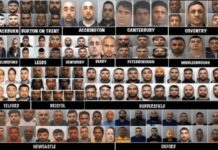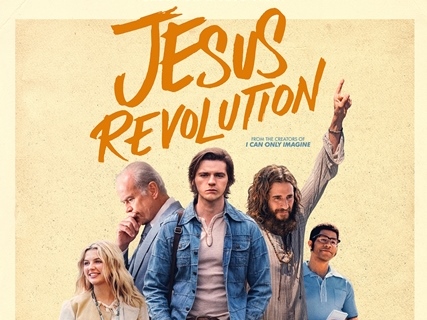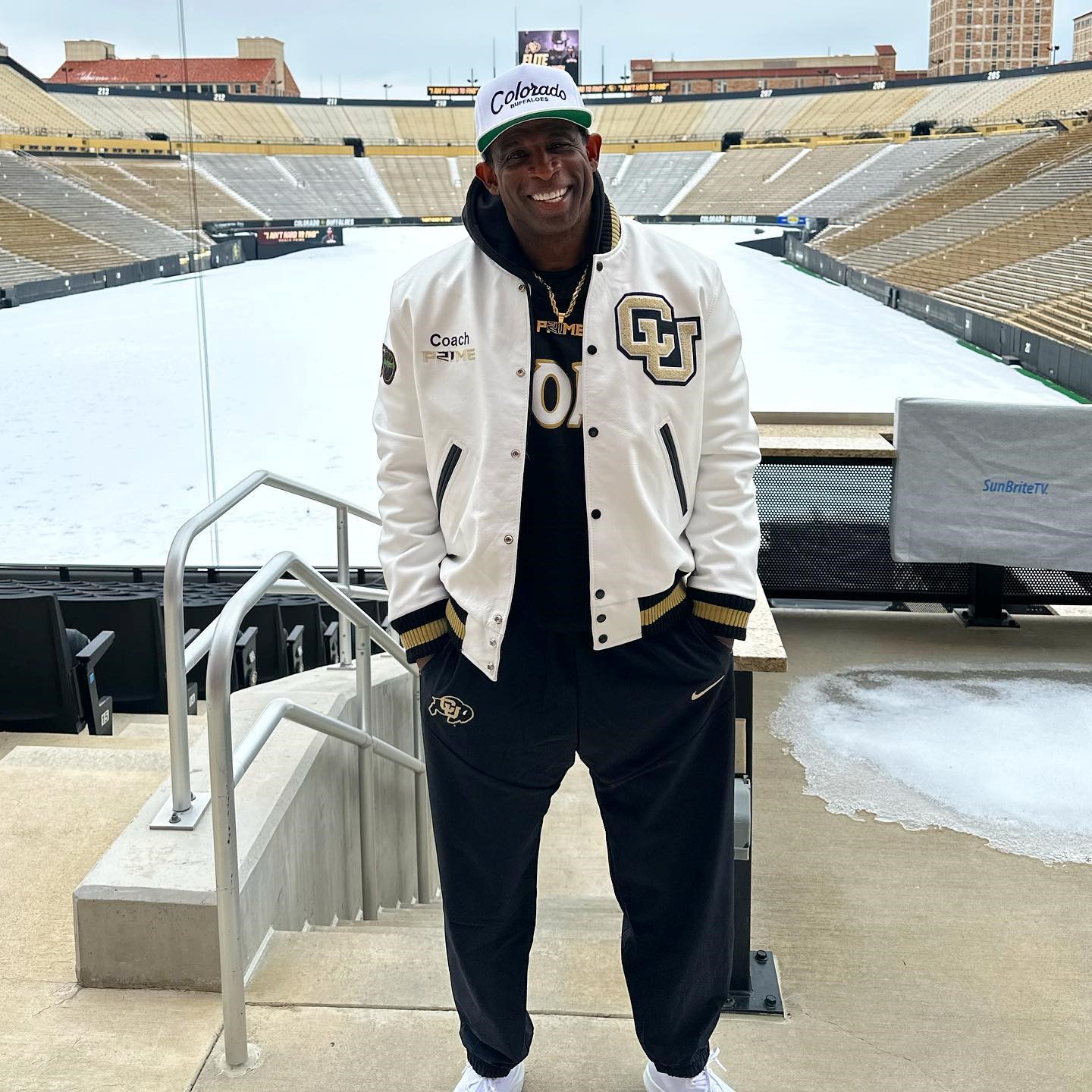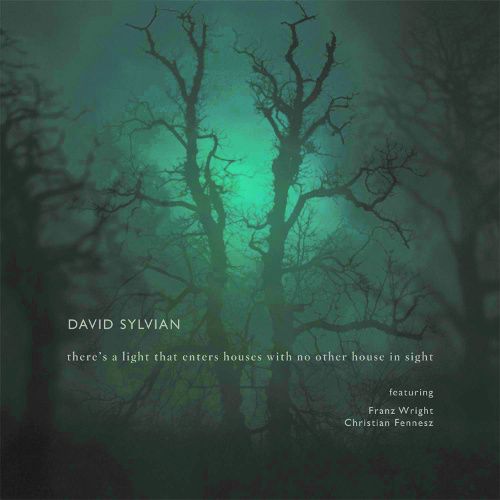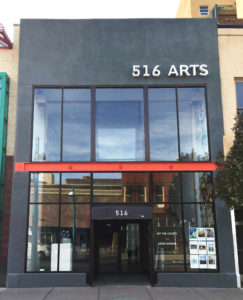
Martorell and Ungerleider are in Albuquerque for a conversation concerning an exhibit titled Puerto Rico: Defying Darkness. Before the conversation, I speak with David Ungerleider. He provides me with a quick summary of his relationship to Martorell and discusses his role as an anthropologist, mentioning his book Fiestas de Santiago Apóstal en Loiza,a work about the influence of Afro culture within Puerto Rico.
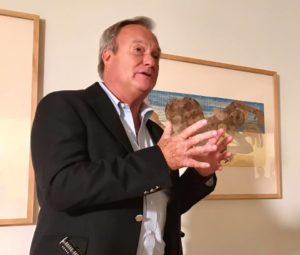
I comment on his role as an anthropologist. His response: “Jesuits encourage us to get degrees in differing areas. I chose anthropology due to my life-long interest in cultures of the world, particularly Central and South America.”
Dr. Josie Lopez escorts the two men to the front of the room. In her introduction, I learn that her inspiration for the name of the exhibit came from Martorell. Martorell told her, “Defying darkness is a full-time job.”
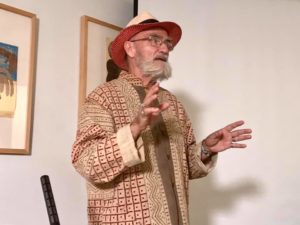
Martorell looked like an elderly statesman: gray hair and beard, wearing a tan Caribbean-type shirt and straw hat with a pinkish brim. David L. Ungerleider, a Tijuana-based Jesuit priest, wears a sports coat, resembling a casual businessman more than a clergyman.
Art and Community
Considered one of the most prolific and important artists in Puerto Rico, Antonio Martorell is printmaker, painter, draftsman, installation artist, stage and costume designer, writer, illustrator and teacher. In addition to his art, he’s a frequent contributor on Puerto Rican television and radio.
Ungerleider entered the Society of Jesus in 1969 and was ordained a Jesuit priest in 1977. He has degrees from several universities, both in the United States and Mexico, and is a board member of the Lannan Foundation, co-sponsor of the evening conversation.

Martorell and Ungerleider originally met in the 1980’s. According to Ungerleider, “During the six years I lived in Puerto Rico during the 80s, I was affiliated with the Centro de Estudios de la Realidad Puertorriqueña (CEREP) while Antonio was active with the Instituto de Cultura Puertorriqueña. We also were involved in the student strike at the University of Puerto Rico. Antonio was a key figure as an artist during those turbulent times on the island.”
Put another way: the two connected over art and an intellectual community. And this is how I’d summarize the hour discussion: a conversation of Martorell’s art, with Ungerleider as moderator, underscored by the role community plays in Puerto Rican culture, particularly in light of Hurricane Maria which devastated much of Puerto Rico.
Exchange
Martorell and Ungerleider had much to say during the presentation. So rather than a complete exposition of the talk, I present some impressions, honing-in on the themes covered in the exchange.
- Quoting a famous poem, they remind us: “Life is not a lie, and neither is death.”
- Martorell states Puerto Ricans are “prone to laughing more than crying.”
- “Artist in Puerto Rico have always worked in community,” Martorell states.
- On the influence of trees in his art, Martorell shares: “Trees are important. Storytelling was always under the shadow of a tree.”
- “Art-making can be a feast, a constant celebration,” Martorell reminds us.
- Showing pictures of his garden post-Hurricane Maria, Martorell says: “The trees were destroyed, uprooted; so, I said, Let’s paint them. We may have lost a forest, but we gained a zoo [of art].”
- On the impression politicians were giving Puerto Ricans after Hurricane Maria: “We were told we were junk. So, we decided to make art from junk, bringing life from the rubble.”
- “All artists are responders: we ask questions and respond with our art. We ask and answer what others can’t utter.”
- ‘Puerto Rican artists work better together than as individuals; art is a community.”
Good From Evil

Throughout the hour-long conversation, Martorell showed slides of his art, quoted widely (poems, Charles Dickens, songs), discussed his recent work—some of which he brought with him, and shared his thoughts concerning Puerto Rican culture and politics. After his presentation, time was opened for questions. Here, Martorell and Ungerleider fielded inquiries ranging from Hurricane Maria and the current political and environmental impact to the state of Puerto Rico art.
Concluding the time, both men discussed a phrase used in Puerto Rico that both helps define a situation and provide hope for the future. The word is bregar. It is a multi-layered word with overtones of “dealing with it.” But for Martorell it means much more. For him, the word represents what artist do: making something out of nothing and bringing good from evil. This is what Puerto Ricans—artist included—do: create beauty from the blasts, be it nature, politicians, or people. Afterall, Martorell ponders, “art is a dialogue with people, nature, and community. A community does well to give an artist a cue, and then let them go create.”
For more about Defying Darkness exhibit, click here: http://www.516arts.org/index.php/programs-link/55-exhibition/749-puerto-rico-defying-darkness

